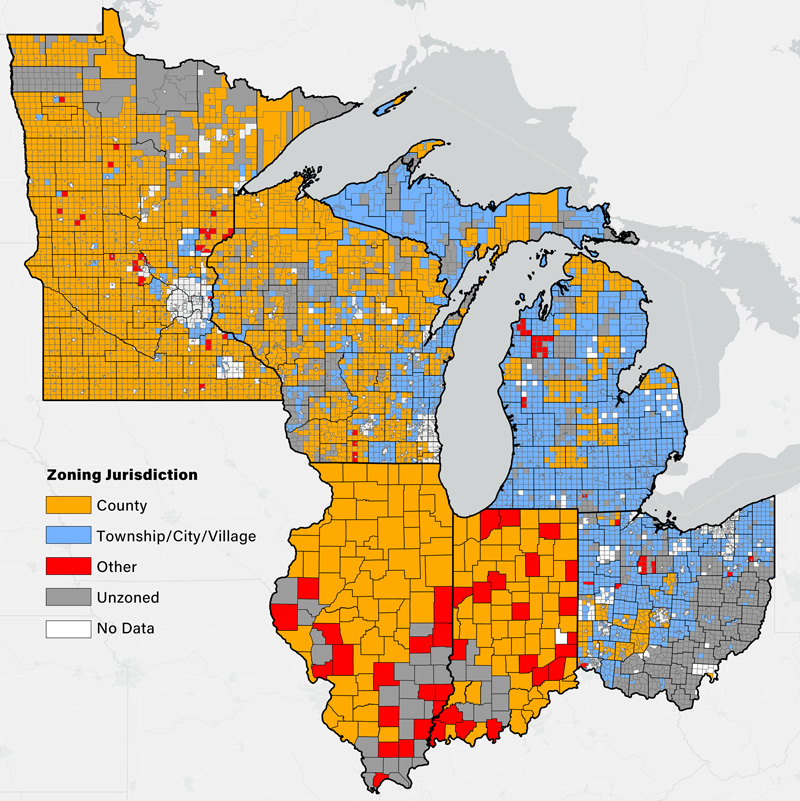 The Center for EmPowering Communities, with funding from the U.S. Department of Energy Solar Energy Technologies Office and the Michigan Department for Environment, Great Lakes, and Energy, has expanded its pioneering renewable energy zoning database to detail solar zoning regulations across the Great Lakes region.
The Center for EmPowering Communities, with funding from the U.S. Department of Energy Solar Energy Technologies Office and the Michigan Department for Environment, Great Lakes, and Energy, has expanded its pioneering renewable energy zoning database to detail solar zoning regulations across the Great Lakes region.
Continued growth in solar photovoltaics (PV) will rely on more utility-scale PV deployment, which often occurs in rural areas. To understand how rural communities are preparing for utility-scale PV development within their land use regulations, the database provides a comprehensive data repository covering six states: Illinois, Indiana, Michigan, Minnesota, Ohio, and Wisconsin.
The corresponding fact sheet focuses on “principal-use” solar (i.e., solar farms), where solar energy generation is the primary function of the site. Key research findings include the following:
- Approximately 70% of zoning ordinances in the Great Lakes region do not address principal-use solar energy systems, creating uncertainty for developers looking to site projects and for community members.
- Explicit bans on principal-use solar are relatively rare, with only 18 ordinances prohibiting such projects. However, some jurisdictions impose restrictions on solar development in agricultural districts, where large tracts of land are most commonly sought by developers.
- The most prevalent regulation is setbacks from property lines. Ordinances often apply different setbacks for participating versus non-participating properties, and lot size and area coverage regulations also vary.
- The research highlights differences in zoning authority across states. For example, in Illinois and Indiana, solar energy systems are regulated at the county level, while in Michigan, Minnesota, Ohio, and Wisconsin, jurisdiction may be held by either townships or counties.
The database comprises over 2,165 individual zoning ordinances, providing a detailed record of local regulations that impact solar development and offering valuable insights for solar developers, policymakers, and community members to better understand the regulatory landscape. Data collection involved a thorough review of local zoning ordinances conducted by a team of student researchers.
This material is based upon work supported by the U.S. Department of Energy’s Office of Energy Efficiency and Renewable Energy (EERE) under the Solar Energy Technologies Office Award Number EE00009361. The U.S. Department of Energy Solar Energy Technologies Office accelerates the advancement and deployment of solar technology in support of an equitable transition to a decarbonized economy. Learn more at energy.gov/eere/solar. This work is also supported by the Michigan Department of Environment, Great Lakes, and Energy under grant number MEO-21-056.